Carpenter Bee vs Bumble Bee
The main difference between a Carpenter Bee vs Bumble Bee is certainly not appearance. In fact, they are often confused – one for the other. But, despite their common physical appearance, they could not be more different in other ways. Their approach to raising young and interacting with the world is not the same.
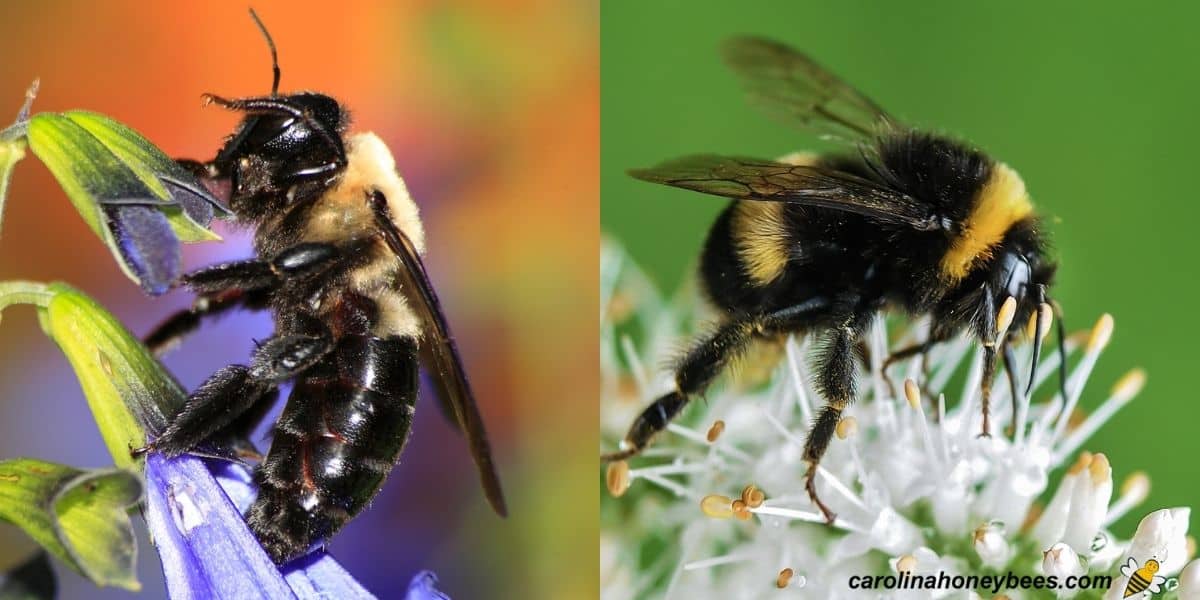
Bumble bees are often praised for their role as pollinators. While the similar looking Carpenter bee is considered a pest due to it’s nesting habits.
Carpenter bees are often confused with Bumble bees. However, it is fairly easy to tell the difference when you know what to look for. Learning how to identify them is one of the most poplar bee questions I am asked.
What Does a Carpenter Bee Look Like?
The Eastern Carpenter bee (Xylocopa virginica) is found in the eastern sections of North America. It is a native insect that measures about 1 inch in size.
However, there are several species of Carpenter bees that vary in size. Some have a yellow thorax and others have a black, white or brown mid section.
The Bumble bee family consists of several different species as well. You can find small and large ones foraging in your flower garden. The average size of the Bumble bee is 3/4″ to 1/5″ in length. They are likely to have yellow markings on their body including the abdomen.
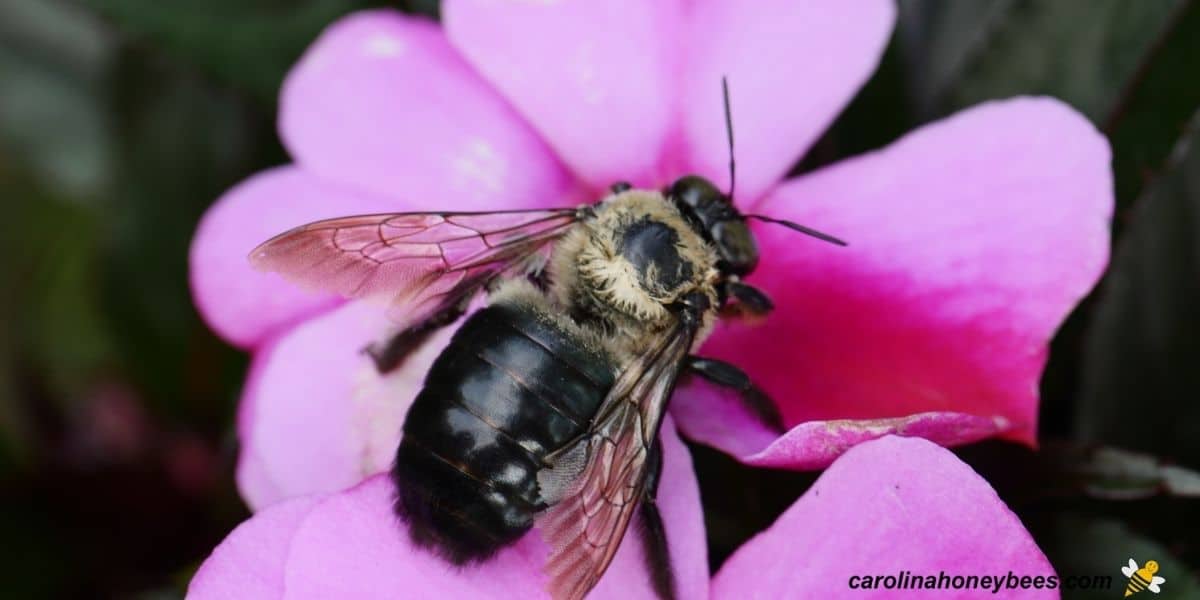
How to Identify a Carpenter Bee
The easiest way to identify a Carpenter bee is to look at the abdomen. A Carpenter bee has a shiny black abdomen. In contrast, the Bumble bee is fuzzy all over – all three body sections are covered in fuzz including the hairy abdomen.
Especially in Spring, when hundreds of bees are out looking for food it can be challenging to determine if the insect is a Carpenter bee or a Bumble. I’ve been a beekeeper for years and I still have to take a second look sometimes.
Carpenter Bees and Bumble Bees are Both Pollinators
Do Carpenter Bees Pollinate? Yes, they do. In fact, 15% of our agriculture products are pollinated by native bees – this include Carpenter bees.
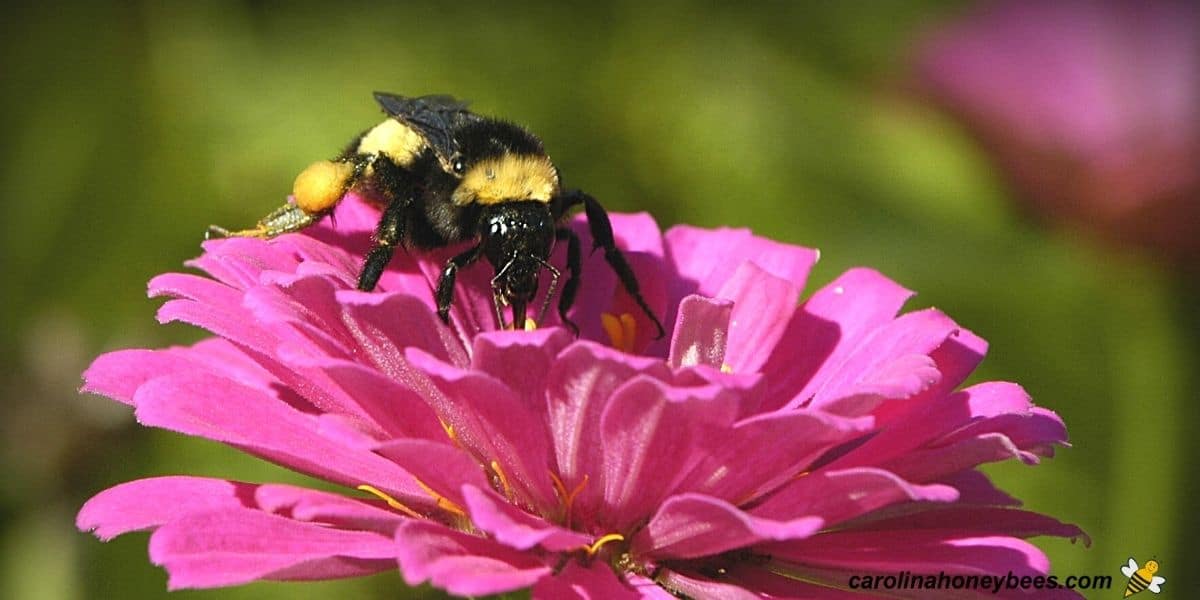
Nest Sites are Different
Bumble bees are social insects that nest in the ground – or in empty cavities. Abandoned rodent burrows are a favorite of Bumble bees but they can be found living in bird houses or other empty nests.
They live together in families of several hundred and share in taking care of the nest and rearing young. Bumble bees do not bore holes in wood. They lack the powerful jaws to do so.
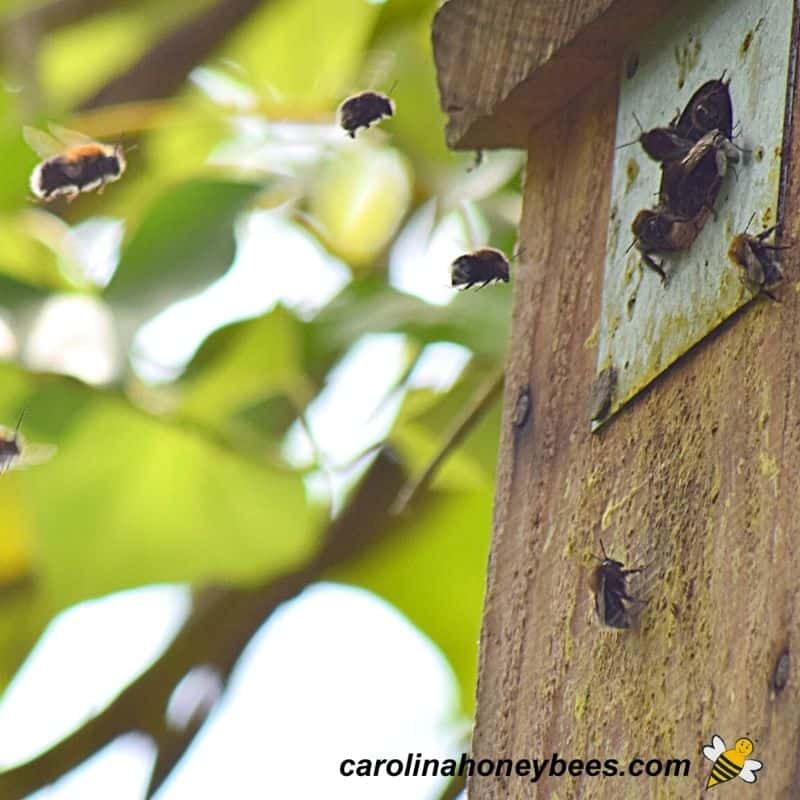
Carpenter bee nests are made by chewing holes in wood with their toothed mandibles (bee teeth). They make a tunnel nest with chambers. These perfectly round holes are easy to locate and may be reused over several years.
Inside the female Carpenter bee lays a single egg in each chamber on a ball of pollen and nectar. The hatched larva will feed on the provided food until emergence.
As wonderful as this natural process is, it is also the reason for the unpopularity of Carpenter bees. They can cause large amounts of damage to wooden structures – homes, decks, eves of houses, etc.
The female is capable of chewing an inch of depth per day. As nests are reused each season, the nest site becomes larger and larger – giving room for more and more offspring.
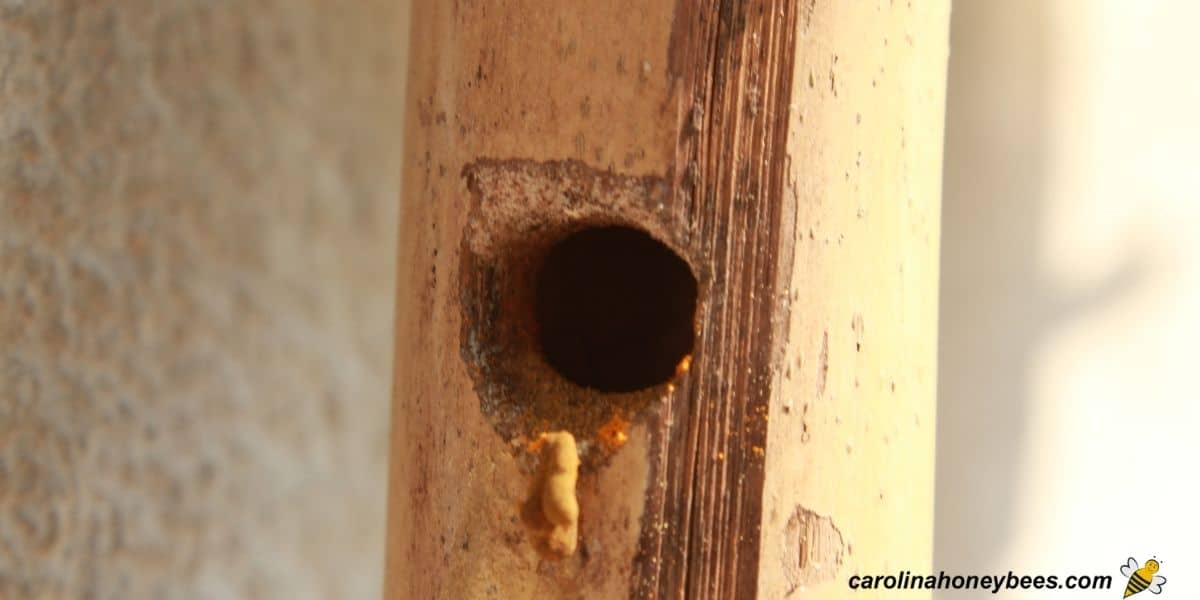
Different Behaviors Between the Two Bees
While not as social as Bumble bees or Honey bees, Carpenter bees may live together in small groups. Instead of infertile females participating in care of the young, subordinate queens help protect the nest site.
Bumble bees abandon their nest site and the mated queen hibernates in leaves or ground debris until Spring.
Carpenter bees hibernate in the nest – honey bees do not. But, most bees come out in late Winter or early Spring as temperature allows.
Defensive Behavior
Bumble bees are rarely aggressive unless you interfere with their foraging or bother a nest site. They are happy to go about their daily tasks.
Carpenter bees have a bit more defensive attitude in regards to protecting their nest. It is commonly the males make a big of show of nest defense.
The bees seems to stare at you or chase you away from the entrance hole. Males of the Eastern Carpenter Bee family have a characteristic white patch on the front of their face. The good news – they can’t sting!
But, you may hurt yourself running from them while you try to get a good look at their face – don’t ask how I know this.
Female bees can sting but as less likely to do so unless you are a serious threat to them or the nest. Give them a wide berth and you should be okay.
Protecting Your Living Space from Carpenter Bees
Because they do have a place in our world, it is best to let native bees do their thing. However, the damage done to human structures is impossible to deny. There are several strategies for dealing the Carpenter bee infestations.
They will bore into painted wood but they prefer a raw wood surface. Adding a stain (a good coat of paint is better) to exposed wood may help deter nesting. Female Carpenter bees love soft wood such as Cypress, Cedar or Redwood.
Various traps are also used to capture these wood boring insects as a last ditch effort to protect your wooden structures. Their success various by type of trap and location.
Do Carpenter Bees Make Honey?
Carpenter bees do not make honey. The honey bee is well known for being a big producer of this sweet food. Even Bumble bees make very small amounts that they store in honey pots. However, carpenter bees are not honey producers.
If we could take away the wood damage in this story of Carpenter bee vs Bumble bee, it would be difficult to choose a winner in popularity. However, the former is consider a pest by many so the popularity award must go to the Bumble.

